- Home
- Patrick Robinson
Hunter Killer Page 42
Hunter Killer Read online
Page 42
“No sir, she did not.”
“My suggestion is that we freeze the money, temporarily, and then retrieve ten million of it, leaving Madame Gamoudi with five million. I think that would be fair compensation for the loss of her husband. We should also make it known to her that she is welcome back to live among her own people in France. She is, after all, innocent.”
St. Martin sounded doubtful. “I agree it would be more comfortable to have her on our side,” he said. “And when the Colonel is gone, we could take steps to bring her home. Just so long as she doesn’t know what happened to her husband,” St. Martin reminded the President.
“Oh, she’ll never know. An accident in a far-off land. Meantime, I should get to work on freezing that money. Ten million U.S. dollars is rather a lot to waste on a dead man, n’est-ce pas?”
For the next half hour the Foreign Minister put ten aides onto the task of opening up a bank on a Sunday afternoon. It took only a short while to locate the emergency number of the bank president via the Paris Gendarmes.
But when the call was finally made, the news was not good. “I’m sorry, sir,” said the banker. “But that account was removed from Paris and relocated in Boston, Massachusetts.”
“But when did that happen? And why were we not informed?”
“Sir, this account was set up deliberately fireproof. Only Colonel Gamoudi and his wife could issue instructions by means of a password. The money was removed about four hours ago, with a call from the United States Ambassador to France. The envoy had every necessary detail, and informed us that Mrs. Gamoudi was in the care of the U.S. government, and, if we checked, there was an edict from the President of the United States instructing the Bank of Boston to transfer the money to a different branch.
“Of course, sir, we made the checks. We even phoned back the embassy, and everything was in order…and, sir, it’s not as if the money has disappeared. It’s still in the Bank of Boston, still in the same account. It’s just been moved to a different city.”
“A different planet, I am afraid,” replied St. Martin, wishing the bank chief good afternoon and pondering the sheer futility of phoning a bank in the United States and asking to have access to a $15 million account controlled by two private customers.
“Hopeless,” he muttered. “This operation is becoming more and more impossible, every hour.”
111330APR10
GULF OF OMAN
The North Carolina was still steering very slightly north of due west. It was four hours since the satellite signal had been received, and they came once more to periscope depth.
One sweep of the radar located a major ship seven miles off their starboard bow. It was a hazy Sunday afternoon, and it was not possible to get a visual. So the submarine went deep again and continued to close, holding course two-seven-six, making seven knots through the water.
Ten minutes later the navigation officer put the oncoming ship at 24.40N, 58.02E, and again the North Carolina came to periscope depth. And this time they could see the ship, a VLCC, a black-hulled tanker of at least 250,000 tons, riding low in the water, making around seventeen knots.
From here they could see her bright scarlet upperworks through the periscope, but they would have to close in much nearer to read the name high on her port bow.
The Captain ordered her deep again, and the North Carolina accelerated underwater on a direct course to the tanker’s line of approach. They came in at over twenty knots for another nine minutes, and the Captain ordered them again to PD. And now they could really see her, less than a mile away, and every bit of 300,000 tons. But the name, in white lettering just below the massive sweep of her bow, was still not sufficiently clear to be read.
They slid back under the surface and ran forward for another half mile before returning to PD. They were actually just astern of midships, which made it slightly more difficult to read the letters.
But the name was unmistakable. This was the Voltaire, right on time, barreling through the calm water off the coast of Oman, laden with Abu Dhabi’s finest crude and bound for the port of Marseille.
Captain Stimpson ordered the North Carolina deep again, and he ordered a speed increase and a course change…make your depth one hundred, speed twenty-two, come left to course zero-seven-zero.
The North Carolina, now running easterly for the first time, was moving much faster than the tanker, on a course that would take her slightly north of the oil ship. On this diverging course she would be fifteen miles away inside forty-five minutes, but she would still be directly off the port beam of the Voltaire.
Final missile check.
Captain. Missile Director. Both weapons programmed…course one-eight-zero to target.
At precisely 1425, Capt. Bat Stimpson, with his ship now two hundred feet below the surface, ordered the missiles away. And one by one the sub-Harpoons ripped out of the underwater launchers, pre-programmed and unstoppable—at least by an oil tanker.
They swerved upward toward the surface and burst clear of the water, cleaving their way into the clear skies, still swerving until they settled down on the course fed into the computer brain of each weapon.
These were not sea-skimmers, but they flew low over the water, coming in toward the Voltaire at over 1,300 mph. Flight time for their fifteen-mile journey: forty-one seconds.
No one saw anything. The ocean was deserted in this part of the Gulf, and the crew of the tanker was paying scant attention to anything out on the port side. Those who were on watch were gazing steadily ahead when the big heat-seekers smashed into the hull seventy feet apart, twenty feet above the waterline.
The missiles exploded with sensational impact, sending two fire-balls clean through the mighty ship. Each one of them blew the bulkheads separating the oil tanks. The heat was so incinerating, it immediately set fire to the gasses above the actual fuel, which exploded violently, blasting upward two massive holes in the deck.
The deck pipelines were blown to smithereens, and in a split second the crude oil itself, unable to resist the terrifying heat of the missiles’ warheads, burst into flames, the fire racing across the surface of the oil. It was a vicious, roaring fire.
Within twenty seconds the great tanker was doomed. She began to list to her port side, and the fires were so intense the entire upperworks was becoming too hot for human survival. The French captain ordered the ship’s company to abandon, and lifeboats were lowered on the starboard side and over the stern.
Miraculously, no one had been killed, because there was no one for’ard at the time. The crew was either on watch, sleeping, or eating in the towering aft section. The nearest missile hit one hundred yards for’ard of this. But the fire would not be quelled for three and a half days, and would melt the midships section of the deck and upper hull.
One minute after she had unleashed the missiles, the North Carolina turned away from the datum and ran southeast at twelve knots, leaving behind a puzzle that would confuse the world’s tanker industry for several days. But in France, military leaders were highly suspicious of an involvement by the U.S.A.
Indeed General Jobert, C-in-C of France’s Special Forces, on that same Sunday evening, convened a meeting with his friend Adm. Marc Romanet, the Navy’s Flag Officer Submarines. The General came in by helicopter to the dockyards in Brest, and they talked through dinner.
There was just one question: would the United States have dared to sink a French tanker?
Admiral Romanet was absolutely certain the all-powerful U.S. Navy could most certainly have done it. “I could have done it,” he said, “in a halfway decent attack submarine.”
“Leaving no trace and no clues?” asked the General.
“Not a problem,” replied Admiral Romanet. “Mind you, with all the trouble for the U.S. at the United Nations I think it extremely unlikely they would have done something like this. I mean…that censure motion was very serious last Thursday. But I expect you noticed the American representatives at the UN refused to attend any of the thre
e Security Council meetings, or indeed to recognize formally any censure by anyone.”
“I did notice that, of course,” replied the General. “They are quiet, but defiant. It would still be very extravagant just to go out and blow apart a three-hundred-thousand-ton tanker in the Strait of Hormuz, in complete contempt of world opinion.”
“Yes. It would,” said Admiral Romanet slowly. “But my fellow former submariner, Admiral Morgan, is in the White House at the President’s side. And he is a very dangerous man to any enemy of the United States. And, whether we like it or not, at this moment, he perceives us to be in that category.”
MONDAY, APRIL 12, 0530
THE RED SEA, SOUTH END
Capt. David Schnider, commanding officer of the U.S. Navy’s second brand-new Virginia-class SSN, the Hawaii, was waiting 200 feet below the surface, thirty-six miles north of the Bab el Mandeb. His ship was making a quiet racetrack pattern, moving at only five knots in a surprisingly deep stretch of water, almost 700 feet, twenty-five miles off the remote desert seaport of Al Mukha, on the Yemeni coast.
This is where the Red Sea split into two buoyed channels, both of them with in and out lanes, one heading along the Yemeni coast, the other swerving toward the Eritrean side. Captain Schnider did not know which lane his quarry would choose, which was why he was lurking quietly in deep water, positioned to hit in either direction. But his hit would be on a very special ship and there could be no mistakes.
Captain Schnider, who was born within sound of the old Brooklyn Navy Yards in New York, was one of the most able SSN commanding officers in the U.S. Navy. At forty-four, he had already commanded the Los Angeles–class attack submarine U.S.S. Toledo, and there was a degree of envy among his contemporaries when SUBLANT had appointed him to U.S.S. Hawaii.
David Schnider was a short, swarthy man with a crushing grip on facts and situations. He would have made one hell of a lawyer, but his father had served as a Chief Petty Officer in a destroyer, and his grandfather, a gunnery Chief, had died in the blazing hulk of the battleship California at Pearl Harbor.
The Navy was in his blood. Despite a certain rough edge to his method of command, and indeed his somewhat black humor, his men loved serving under him, and there were those who thought he might rise to the highest pinnacles of the U.S. Navy.
Captain Schnider knew what he was looking for here at the south end of the Red Sea—an 80,000-ton red-hulled gas carrier, distinguished by four massive bronze-colored holding domes, which rose sixty feet above the deck, with a long gantry crossing the length of the ship, nine hundred feet, above all four domes, and then descending to the foredeck.
David Schnider agreed with SUBLANT. She was damned hard to miss, so long as you were positioned in more or less the right place. His plan was to let her run by and then slam his missiles into the hull below two of the holding domes. The water here was plenty deep enough for a safe and efficient escape, but Captain Schnider had decided he did not wish to turn around, and then run back past a burning ship that, so far as he could see, was not much short of an atomic bomb.
He had the details of these LPG carriers right in front of him. The TRANSEURO ship he awaited, the Moselle, carried 135,000 cubic meters, that’s 3,645,000 cubic feet of liquefied natural gas, frozen to minus 160 degrees. The liquid gas was compressed 600 times from normal gas and formed, without doubt, the deadliest cargo on all the world’s oceans.
“Jesus Christ,” murmured Captain Schnider. “That sonofabitch could blow up Brooklyn.” And he made himself a promise: that no submarine in all of history had ever vanished from the datum faster than U.S.S. Hawaii would in the split second after he had loosed off her sub-Harpoons.
Meanwhile, the Moselle, which had cleared Qatar’s north gas field at the beginning of the week, had passed through the Strait of Hormuz the previous Thursday, three days in front of the Voltaire. Right now she had completed her crossing of the Gulf of Aden and was positioned to the left of the flashing light on Mayyun Island in the narrowest part of the Bab el Mandeb, heading north.
Captain Schnider’s orders were as succinct as Capt. Bat Stimpson’s had been in the North Carolina the previous day: SINK HER. And the only thing concerning the CO of the Hawaii was the temperature of his target.
“Since the Harpoons, in their final stages, are heat-seeking,” he told his missile director, “how the hell are they going to find a target frozen to one-hundred-sixty degrees below zero? I mean, Jesus, that’s as cold as a polar bear’s ass. Like trying to find the heat in a goddamn iceberg.”
The missile director, Lt. Cdr. Mike Martinez, laughed. “Sir,” he said, “I promise you there’s a ton of temperature in that ship. The refrigeration plants alone generate enormous heat, and the engines, situated toward the stern, generate twenty-three-thousand horsepower. Our missiles will go straight into the hull, probably at one of the refrigeration plants. We don’t want to hit the domes, because they are seriously reinforced. But they won’t be cool. The dome walls are too thick. The Harpoon explosions will be below the deck, right in the heart of the ship.
“And we don’t need to slam one into the side of the dome: the sheer power of the TNT below decks will probably split at least one, maybe two, of them in half. And immediately on contact with the hot air, the liquid gas will flash off into normal gas, the most volatile cargo on the ocean. One spark will turn the Moselle into something like Hiroshima. And I just hope to hell we’re well underwater and moving away fast at that time.”
Captain Schnider smiled and said, “Mike, we’re firing from five miles off her starboard quarter, because she’s going straight up the Red Sea to Suez, and ’most all fully laden tankers moving straight through take the left-hand lane going north. We’ll be so far away when that sucker goes off bang it’ll be like we never existed.”
It was actually quite hard to believe they existed now, while the Hawaii cruised two hundred feet below the surface, making just five knots, and leaving no trace of a wake on the surface. All through the night they had stayed on their deep, lonely station listening to the roar of ships’ propellers churning away overhead, traveling both north and south. But not one of those ships, neither merchantman, tanker, nor warship, had the slightest inkling that beneath their barnacled keels lurked the most dangerous attack submarine on earth.
Two more hours went by after Captain Schnider had outlined his getaway plan to Lt. Commander Martinez. And then, at 0730, as soon as they slid up to periscope depth, they spotted her. It was the Moselle, moving at a steady seventeen knots north up the channel, heading slightly toward her left, just as David Schnider had forecast.
At 80,000 tons she was small enough to make the transit through the Suez Canal, and from there it was a six-day run up to the huge underground terminal for liquid petroleum gas in the port of Marseille.
U.S.S. Hawaii had spotted her on radar ninety minutes previously, but there had been three other paints on the screen at that time. Only now, at 0730, with the sun climbing out of the desert to the east, was it possible to make a POSIDENT. The red hull of the Moselle was bright in the morning light, and the sun glinted off those huge bronze holding domes.
“We got her, sir,” called the XO, as he ordered, DOWN PERISCOPE. And then, We’re about a mile off her starboard bow. Steer course two-seven-zero until we can read her name.
The ESM mast slid down, and the comms room confirmed there were no further signals on the satellite. The orders were unchanged.
As the North Carolina had done on the previous day tracking the Voltaire, the Hawaii moved in closer, but only a few hundred yards, because the light here was much better. The periscope went up one final time, and it was possible to see the huge white letters on her hull, L N G. Right below the safety rail on her starboard bow was the word, MOSELLE.
Temporarily, the Hawaii turned away, back south at twenty knots. But only for six minutes. Then she returned to PD for her final visual check. And the Moselle was still on course.
“Missile Director final checks,�
� ordered Captain Schnider.
“Both weapons primed, sir. Pre-programmed navigation data correct. Course three-three-zero. Launchers one and two ready.”
“FIRE ONE!” snapped David Schnider. “FIRE TWO!”
Seconds later, the two Harpoons came hurtling out of the calm water, one hundred yards apart, swerved as they hit the air, and then settled onto their course, both making a direct line toward the Moselle, one hundred feet above the surface.
Thirty-five seconds later they slammed into the starboard hull of the Moselle, around twenty feet above the waterline. The steel plates on this side of the double hull, both layers, were blasted apart and there was a firestorm of sparks and explosive inside the ship.
The reinforced aluminum of number two dome at first held, and then ruptured, and 20,000 tons of the most flammable gas in the world, packed with methane and propane, flooded out into the air—air that was two hundred degrees Celsius warmer than its refrigerated environment. Instantly it flashed off into vaporized gas, and exploded with a deafening W-H-O-O-O-O-M! Dome three split asunder, both from where the Harpoon had smashed into its shell and from the enormous explosion from dome two. This blew the for’ard dome, and before the Captain of the tanker could even issue a command, the entire ship was an inferno, flames reaching 1,000 feet into the sky, the entire front end of the ship a tangled wreckage of ruptured, melting steel.
Again, as in the tanker, the crew was, to a man, in the aft section, in the control room, the engine room, and the accommodation block. The Captain issued the totally unnecessary order to abandon her within one minute of the blast. He had not the slightest idea what had happened, and the crew who were able would have to leave in the two lifeboats on davits at the stern.
The whole length of Moselle’s starboard side was a blowtorch of gas, rising up off the water and fed by thousands of tons of liquid petroleum cascading out of the hull from the aft dome, which had not yet exploded but was somehow setting fire to the Red Sea.

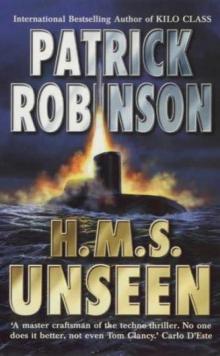 H.M.S. Unseen am-3
H.M.S. Unseen am-3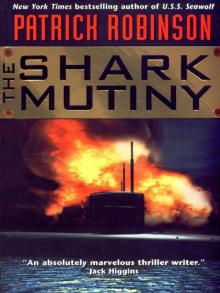 The Shark Mutiny (2001)
The Shark Mutiny (2001)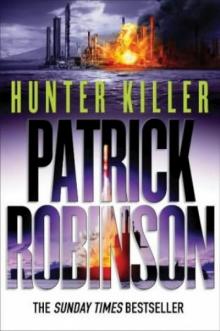 Hunter Killer am-8
Hunter Killer am-8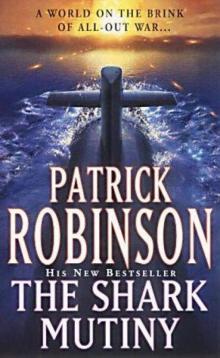 The Shark Mutiny am-5
The Shark Mutiny am-5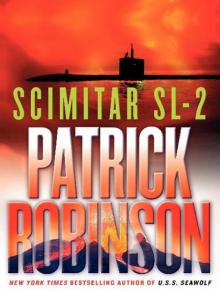 Scimitar SL-2
Scimitar SL-2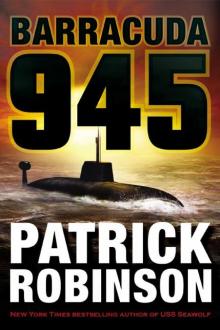 Barracuda 945 am-6
Barracuda 945 am-6 Hunter Killer
Hunter Killer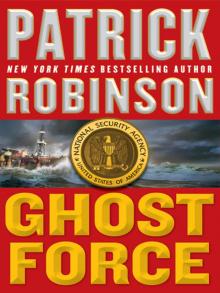 Ghost Force
Ghost Force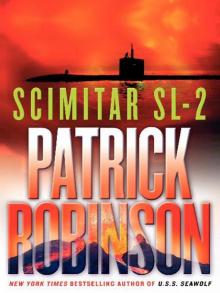 Scimitar SL-2 (2004)
Scimitar SL-2 (2004) Kilo Class am-2
Kilo Class am-2 The Lion of Sabray
The Lion of Sabray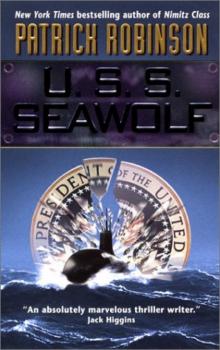 U.S.S. Seawolf am-4
U.S.S. Seawolf am-4 Ghost Force am-9
Ghost Force am-9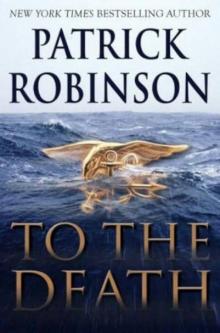 To the Death am-10
To the Death am-10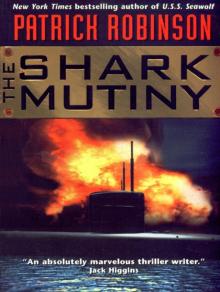 The Shark Mutiny
The Shark Mutiny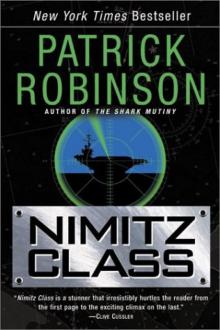 Nimitz Class am-1
Nimitz Class am-1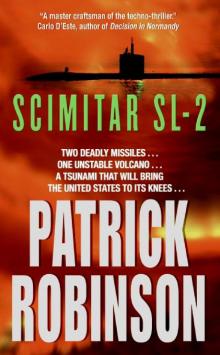 Scimitar SL-2 am-7
Scimitar SL-2 am-7 Barracuda 945
Barracuda 945 Intercept
Intercept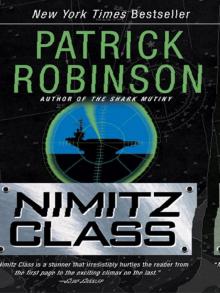 Nimitz Class (1997)
Nimitz Class (1997)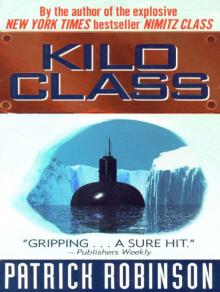 Kilo Class
Kilo Class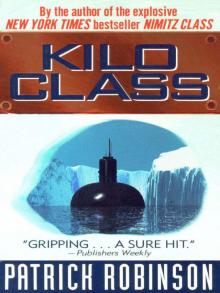 Kilo Class (1998)
Kilo Class (1998) Diamondhead
Diamondhead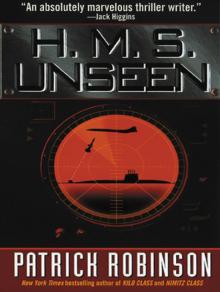 H.M.S. Unseen
H.M.S. Unseen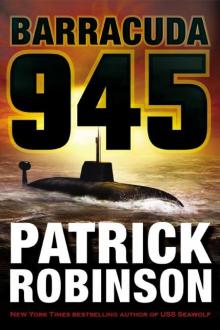 Barracuda 945 (2003)
Barracuda 945 (2003)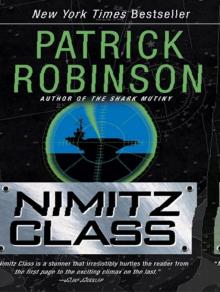 Nimitz Class
Nimitz Class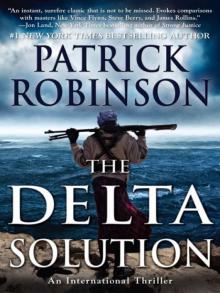 The Delta Solution
The Delta Solution U.S.S. Seawolf
U.S.S. Seawolf